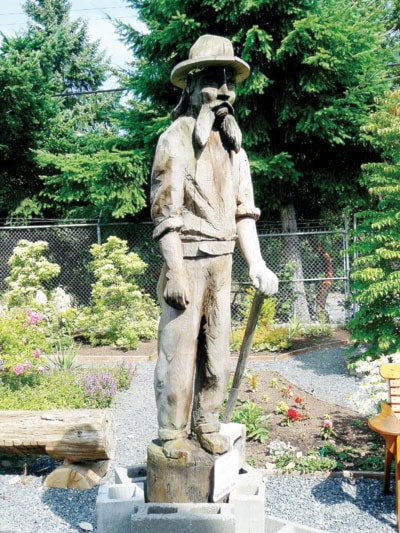“It’s a good life. You go to bed when you like, get up when you like and eat when you are hungry. What more could you ask?”
— Giuseppe Roat
Hermits, by definition, aren’t big on talking to their neighbours and Giuseppe Roat was no exception.
The Qualicum Beach hermit avoided contact with people, especially women, slipping into town early in the morning to do his shopping in order to avoid being seen.
That’s a problem for Netanja Waddell.
The manager of the Qualicum Beach Museum is looking for people who knew the Austrian-born Roat, who died in 1962 at age 82.
“He was very much an eccentric fellow,” Waddell said. “I guess he could have been called the first hippie. He lived the way he wanted, close to nature, in a very sort of wild way.”
The hermit of Qualicum Beach as he was known, opened what was the first museum in town, located at the Hilliers cutoff shortly after returning from service in the First World War.
“The hermit arrived in the late 1920s and during the 1930s and ‘40s he owned 44 acres in what is now known as the Hermitage Park subdivision,” Waddell said. “He said people gave him a pain in the neck so he made a career out of solitude.”
Solitude that is, of a fairly public kind.
“He made his own museum and would charge people to come through it and that’s what he lived off,” Waddell said. “He also had a spring he called Crystal Spring and he would charge 25 cents to take a sip.”
The Crystal Springs Museum of Nature Art included oddities and First Nations artifacts, all of which were auctioned off to the highest bidder upon his death.
He might have been a hermit, but Roat was a shrewd businessman, who one year made $10,000 from his attraction and he acquired 75 lots in the Qualicum Beach area. Although shy and retiring, Roat knew a good thing when he saw it and he used his reputation to attract people to his museum, going as far as dressing up in an improbable First Nations costume or posing to feed baby deer for picture postcards.
“He did very well,” Waddell said. “Most people don’t know we had a hermit or that we have a whole subdivision named after him. He was the first one who wanted to keep some sense of history and collect stories describing events that occurred in town, so we want to honour him with our display.”
That display includes a statue of the hermit carved by the late Ed McMillan, whose widow, Phyllis, loaned it for the event. It also includes a couple of large pieces of bark he had visitors sign when they dropped by — with people signing from as far away as Vancouver, Winnipeg and even Oakland, California.
“They came from all over the place to see him and to see what he had,” Waddell said. “The word must have gone out that he was here.”
When she began putting together the display, Waddell began to run into residents who had their own stories about the hermit — and it’s those stories she wants to collect.
“People would share, saying ‘I met him while I was growing up’ or ‘we snuck out at night to see his museum grounds,’” Waddell said.
She has set up a book in the museum for people to write down their recollections of the hermit and is hoping residents will drop by to write down their memories, e-mail to qbmuseum@shaw.ca or call her at 250-752-5533.
